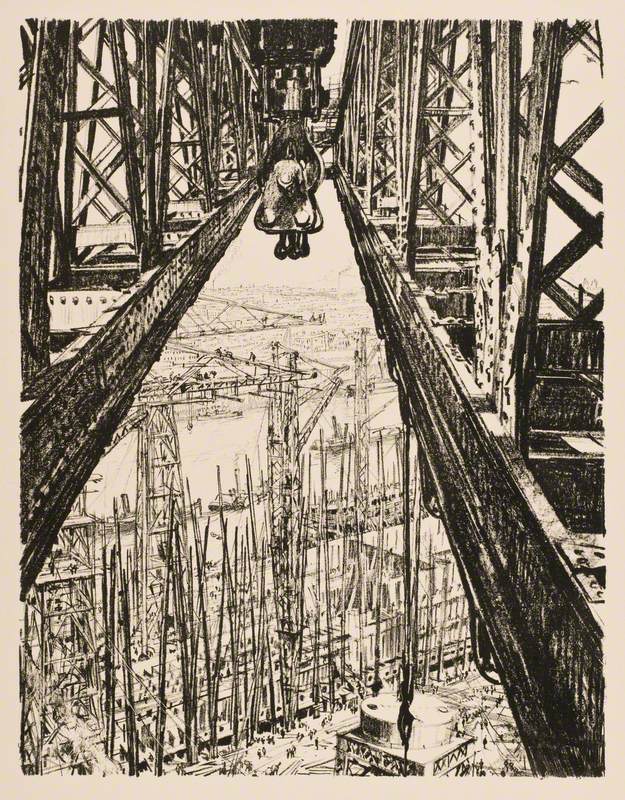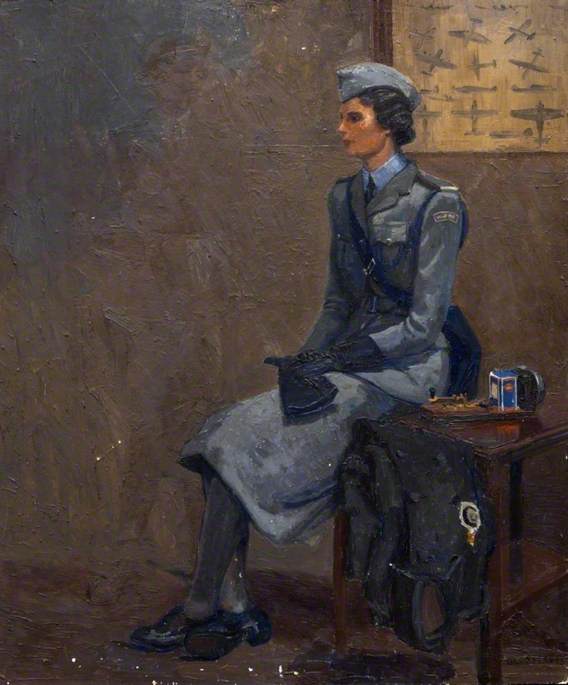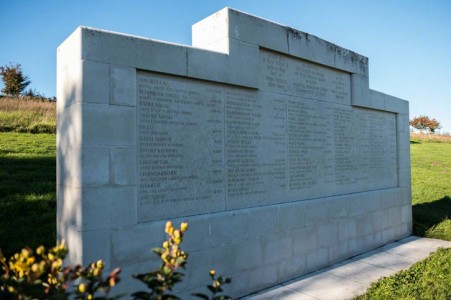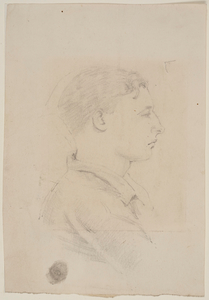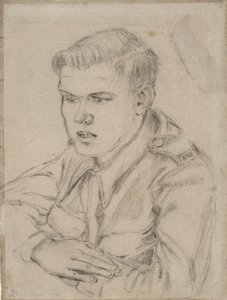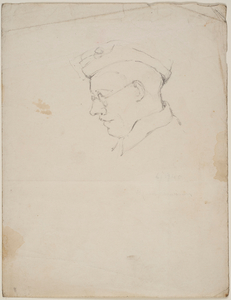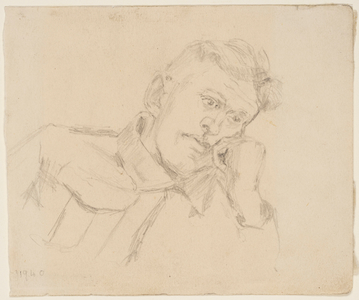Alfred Charles Slawson, known as Jim, was born in 1920 as one of a pair of twins. His life, like his work, is enigmatic. The drawings he produced during his time serving with the Royal Welch Fusiliers in the Second World War capture soldiers at rest, rather than in battle.
Unknown Fusilier, 7th Royal Welch Fusiliers, Newtonards, 1940
Alfred Charles (Jim) Slawson (1920–1988) 
Many of Slawson's portraits become more poignant because we do not know the identity of the sitter. Many share the title 'Unknown Fusilier', echoing 'Unknown Soldier' monuments that commemorate unidentified casualties of war.
To the Unknown British Soldier in France
1921–1928
William Orpen (1878–1931) 
Slawson's drawings show his comrades in the Royal Welch Fusiliers, one of the oldest regiments in the British Army. The regiment was first raised in 1689 by Lord Henry Herbert in Ludlow to assist in the fight in Ireland against James II after his deposition in the Glorious Revolution. The recruits mainly came from North Wales. It first saw action at the Battle of the Boyne in 1690. It retained the archaic spelling of 'Welch', rather than using the modern 'Welsh', until its amalgamation with the Royal Regiment of Wales in 2006.
Unknown Fusilier, 7th Royal Welch Fusiliers
1940s
Alfred Charles (Jim) Slawson (1920–1988) 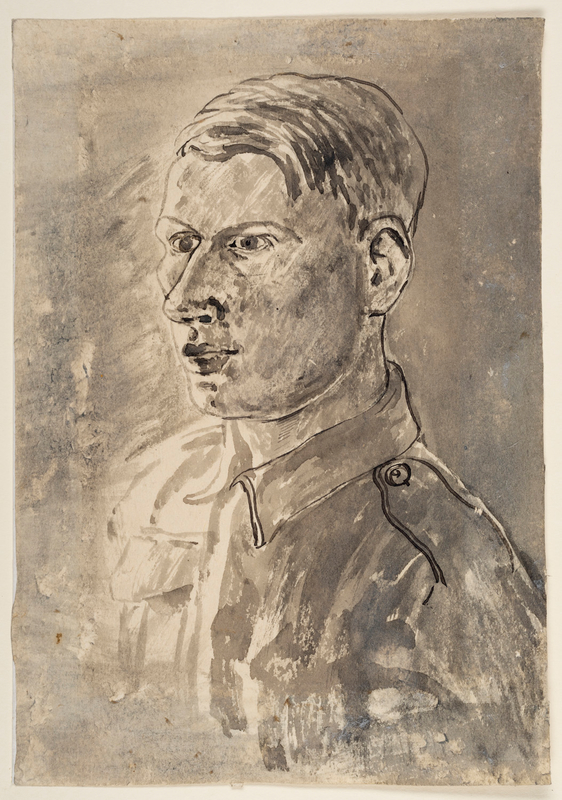
In the First World War, members of the Royal Welch Fusiliers were awarded eight Victoria Crosses. Among those that served were the poets David Jones, Siegfried Sassoon and Robert Graves. In the Second World War, the Royal Welch Fusiliers again found themselves in the thick of action. The First Battalion saw combat in France in 1940 and later in South Asia. Battalions of the Royal Welch also saw action in north-west Europe after D-Day in 1944.
Fusilier Evens, 7th Royal Welch Fusiliers, Newtonards, 1940
Alfred Charles (Jim) Slawson (1920–1988) 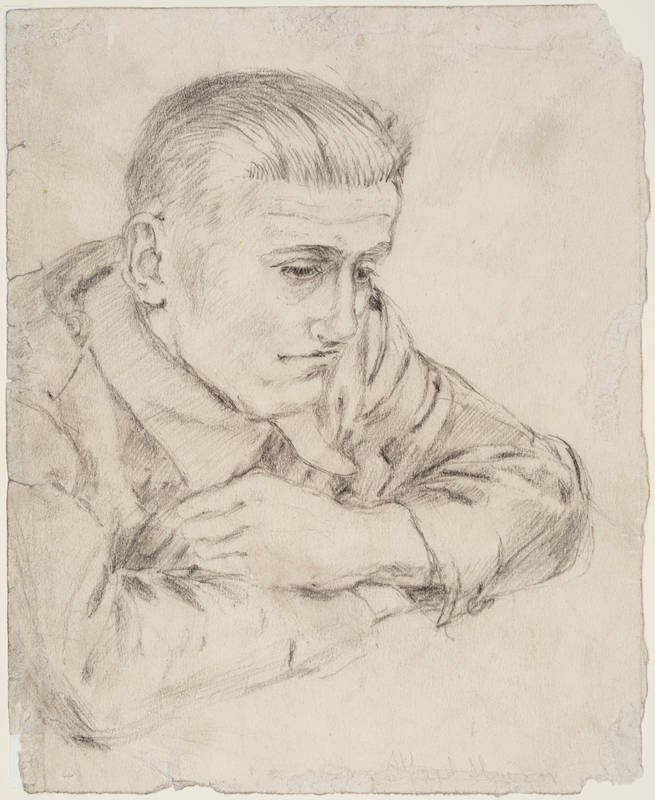
The faces captured in Slawson's drawings show figures of a range of ages. Look closely, and you can trace the experiences of war in their faces. Perhaps it is no coincidence that many of these drawings are dated 1940, during which some members of the Royal Welch Fusiliers fought in France before evacuating at Dunkirk. They then spent two years in the United Kingdom acting as a defence against possible invasion before being thrown into the jungle fighting of India and Burma.
Fusilier Gison, 7th Royal Welch Fusiliers, Newtonards, 1940
Alfred Charles (Jim) Slawson (1920–1988) 
Slawson recorded the faces of his colleagues, perhaps assuming many would never be seen again. His work is a quintessential example of the power of pencil and paper to capture emotions in black and white in a quick, immediate fashion. Slawson attended the small and provincial Hereford Art School in the late 1930s. He was a classmate of his was the portrait painter John Ward, whose work can be found in the National Gallery. However, not a great deal is known about Slawson, nor any other surviving works besides these. The many unknowns of the artist's life are an echo of the unknown identities of many of his portrait subjects.
Fusilier Nobby Clark, 7th Royal Welch Fusiliers, Newtonards, 1940
Alfred Charles (Jim) Slawson (1920–1988) 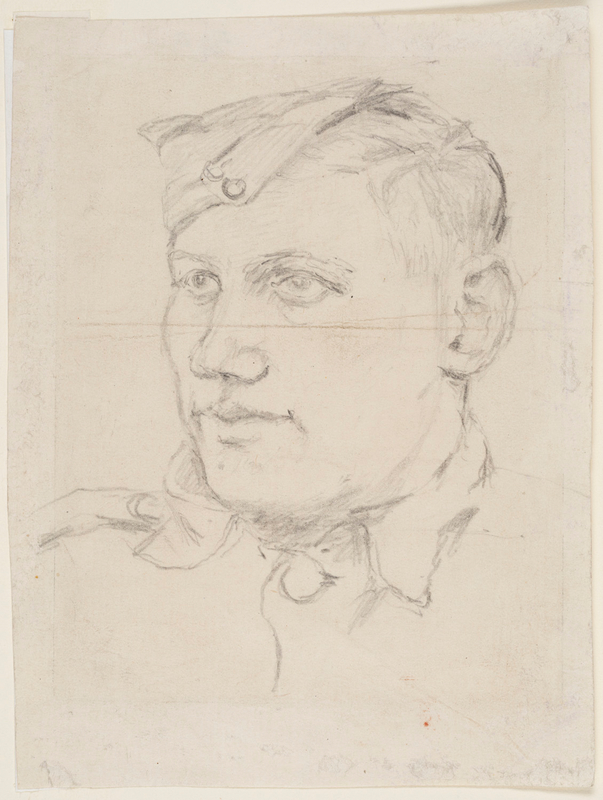
Some of the men in these portraits who are identified have names relating to their jobs or 'slang' names, showing the comradeship of soldiers in wartime. A 'Nobby Clarke' is one named portrait. There must have been a 'Nobby' Clark in every platoon in the British Army. The nickname originated from the perception that the job of clerk was seen as 'posh'. So, everyone with the surname Clarke, or some such derivative, would soon become a 'Nobby': the word 'nob' the shortened and derogative term for 'nobility', used from the eighteenth century.
7th Royal Welch Fusiliers, Herne Bay, 1943
Alfred Charles (Jim) Slawson (1920–1988) 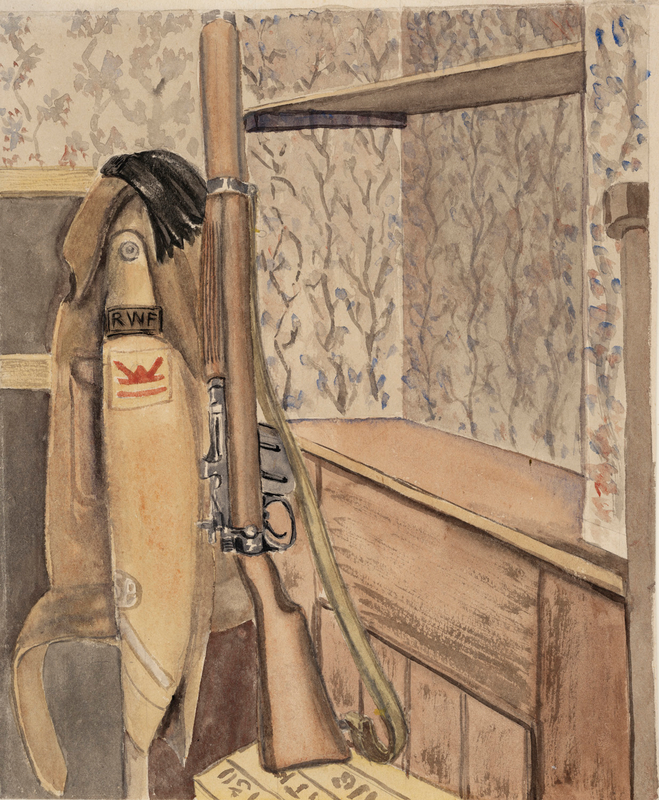
One of the most powerful artworks produced by Slawson is a watercolour, which shows his skill in this medium. In 7th Royal Welch Fusiliers, Herne Bay, 1943, a rifle and a tunic lean against a wall. The absence of a figure makes this a compelling and moving still life. Has the soldier put his rifle down for good or just come home on leave? Perhaps he is changing into his uniform, ready to embark for battle? The sense of absence that pervades this work reminds the viewer of lives lost. It is the only of Slawson's currently known works without a figure, making it all the more poignant.
Fusilier H. Bennet(t), 7th Royal Welch Fusiliers, Herne Bay, 1943
Alfred Charles (Jim) Slawson (1920–1988) 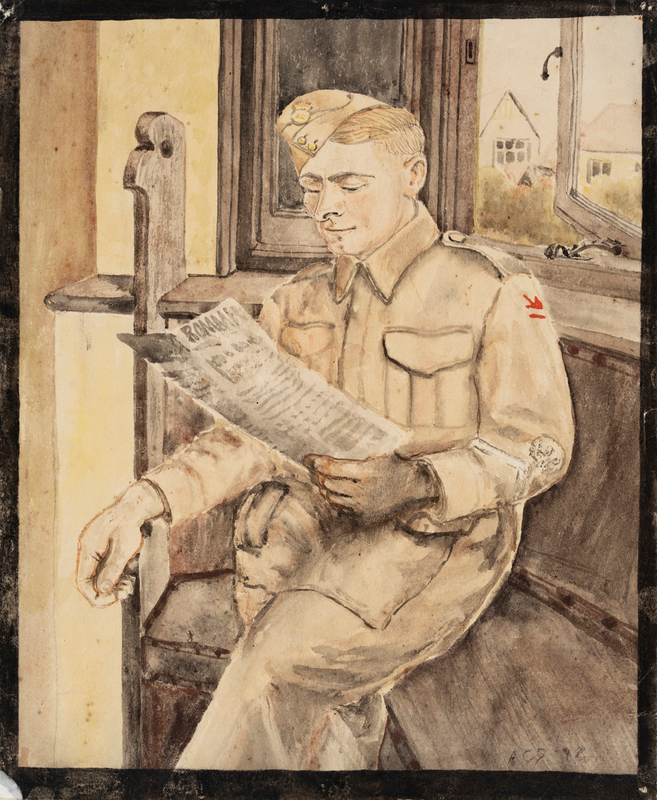
Herne Bay, located on the Kent coast, was a prime location for potential invasion and it is here that some elements of the Royal Welsh Fusiliers were based to stop this invasion. We now know this did not happen, but looking closely at the faces of the men in these sketches reminds the viewer that it was a very real threat at this time. Those based at Herne Bay also took part in training exercises.
Fusilier Corporal Gittins, 7th Royal Welch Fusiliers, Herne Bay, 1942
Alfred Charles (Jim) Slawson (1920–1988) 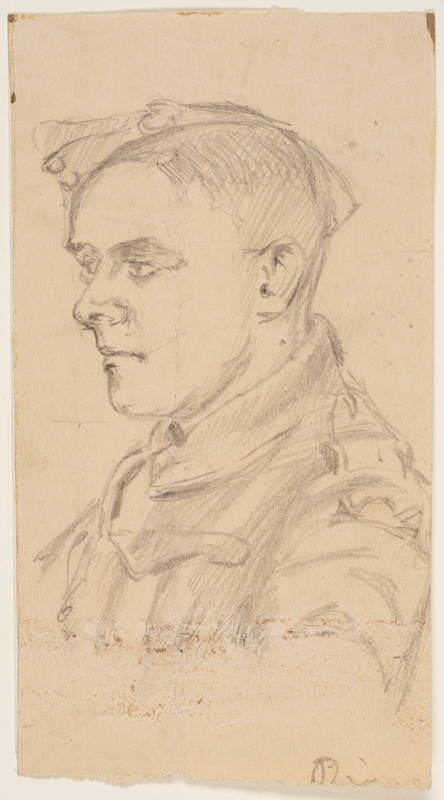
Fusilier Corporal Gittens, sketched at rest in Herne Bay in 1942, is one of the soldier drawings by Slawson who is identified by name. Gittens saw action in France shortly after D-Day. He survived France but died at the age of 56 in Shropshire. Thanks to Slawson's work, we can see the face of this man, at rest, in thought – the man, not the soldier. Slawson was skilled with pencil and watercolour, capturing the faces and feelings of those who served, saw and experienced things we can never know. He allows twenty-first-century viewers the opportunity to put faces to our past.
Gary Haines, archivist and researcher
This content was funded by the Bridget Riley Art Foundation


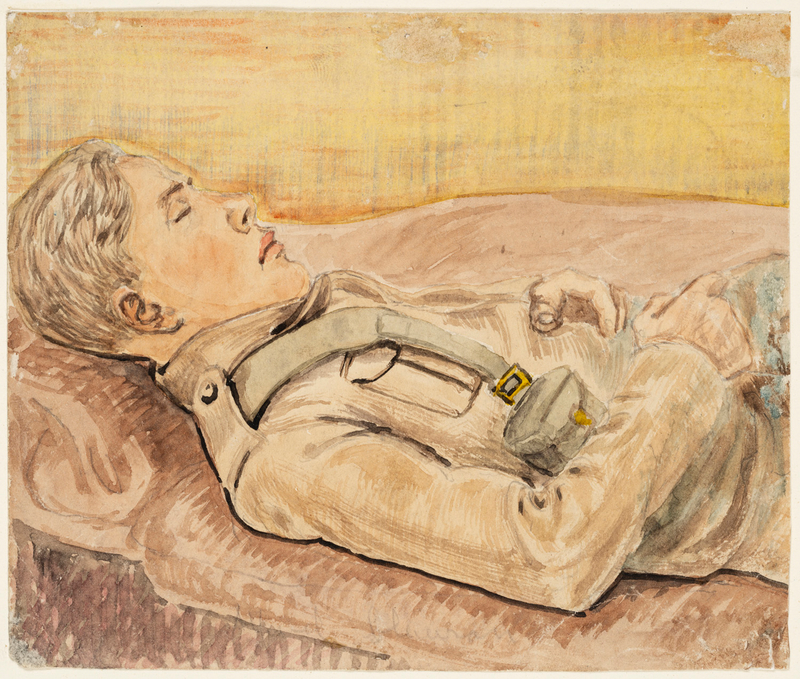
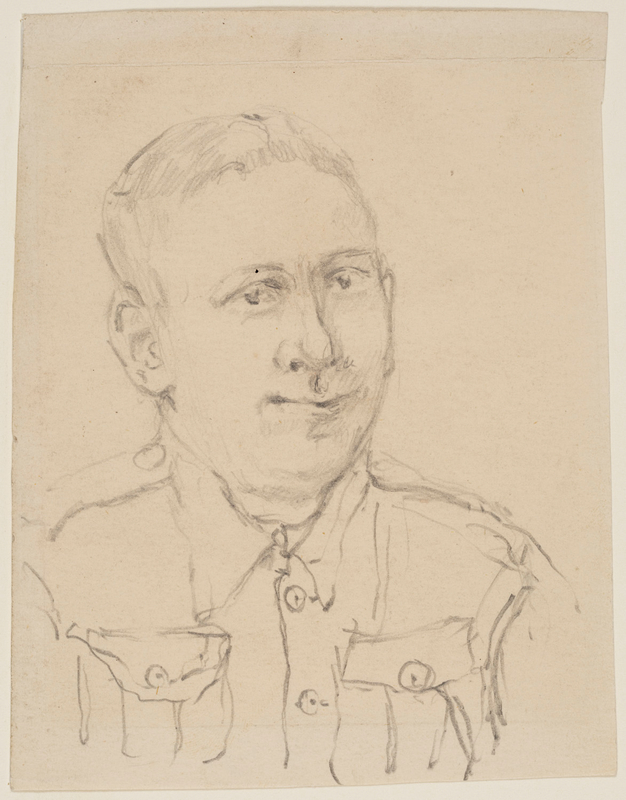

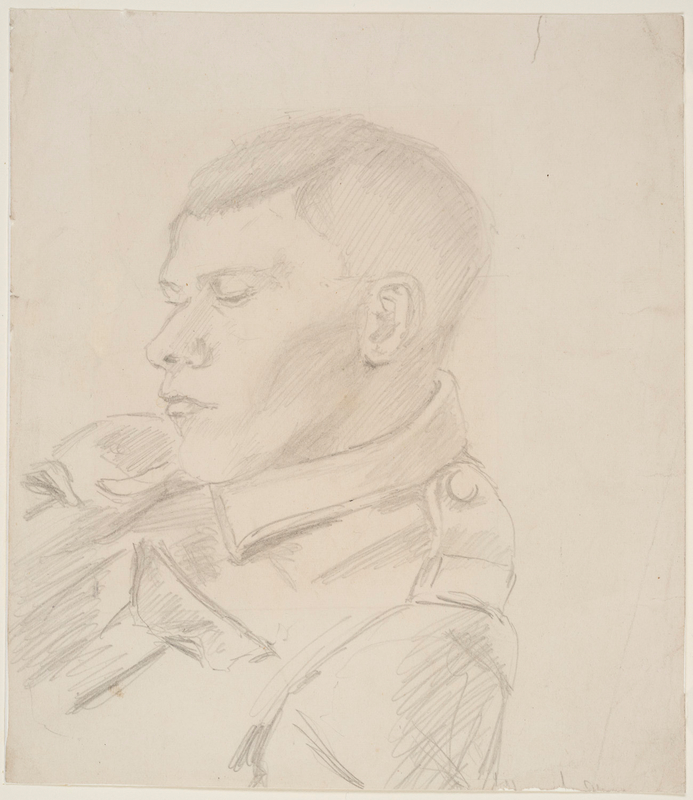
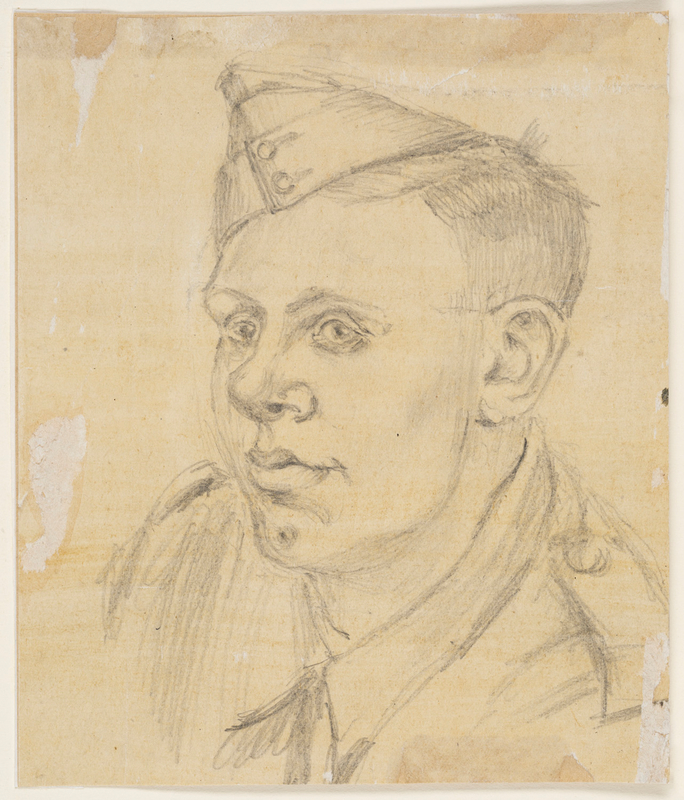
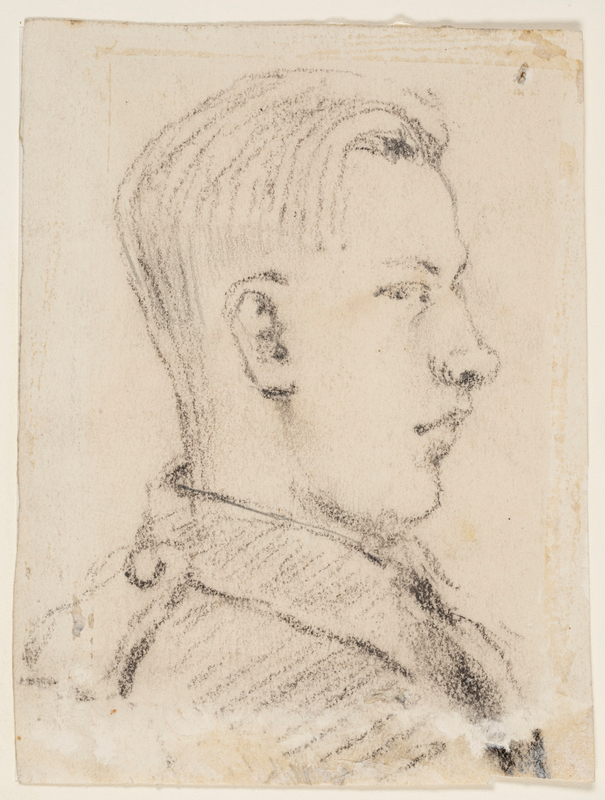
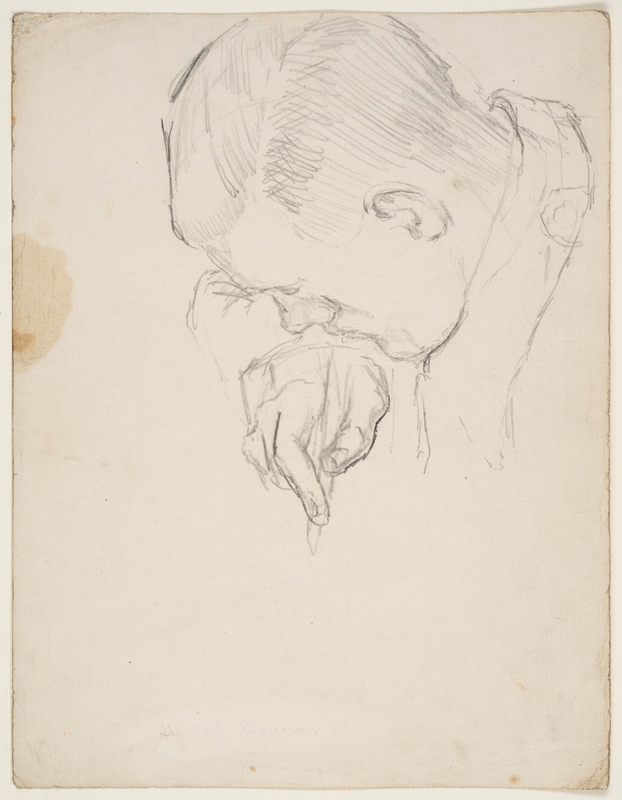

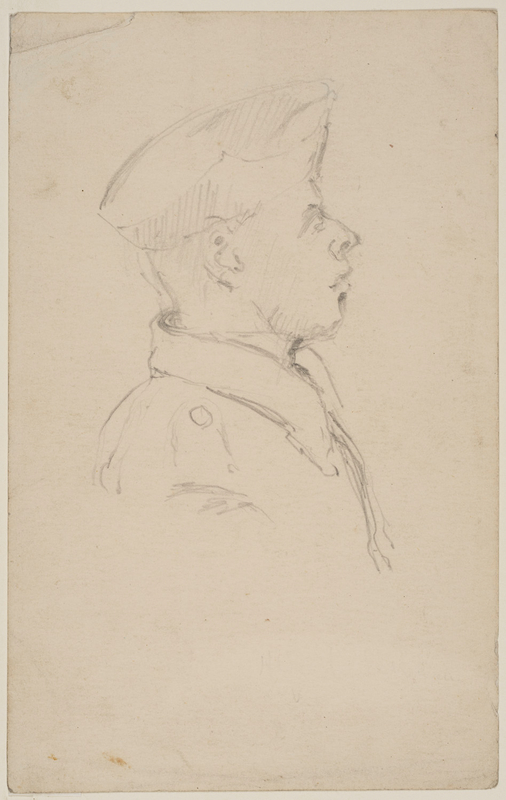
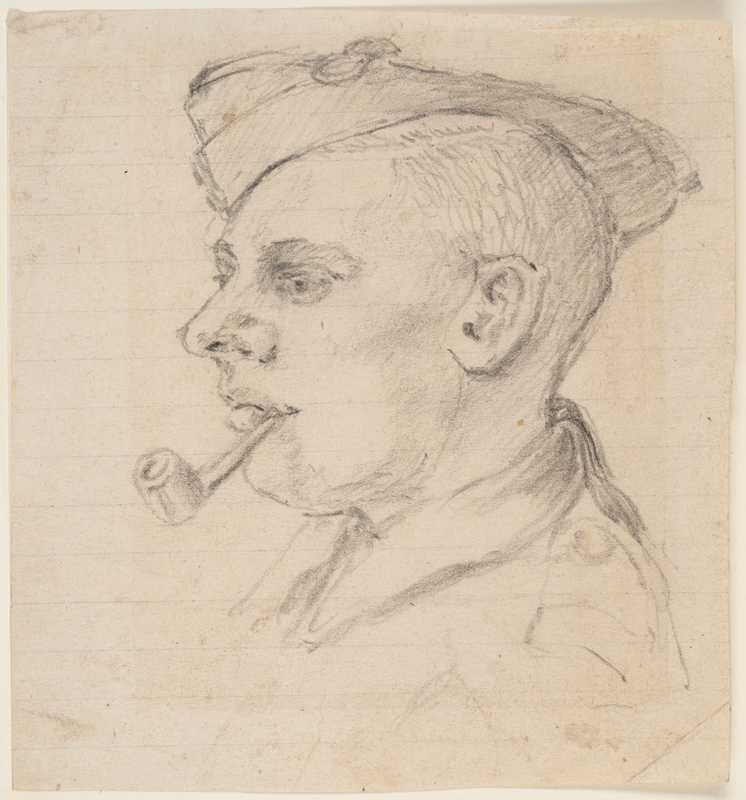

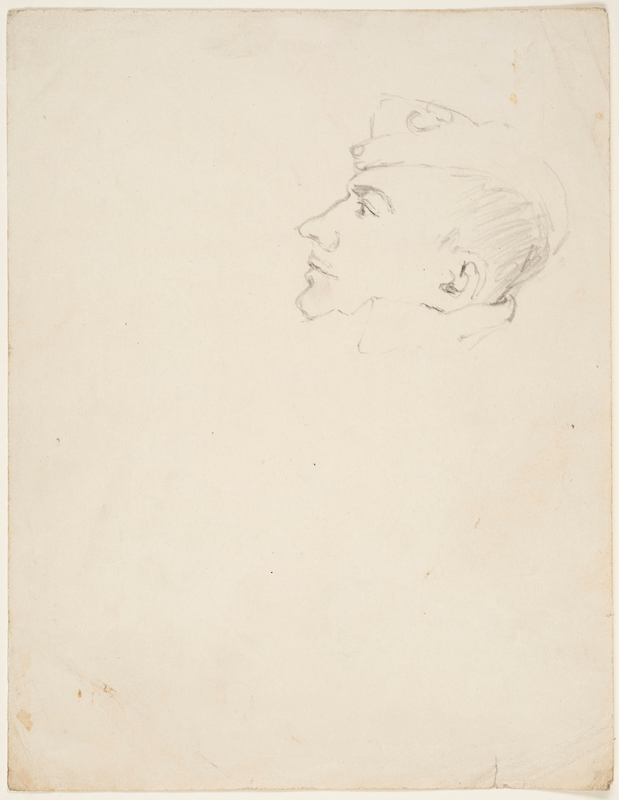
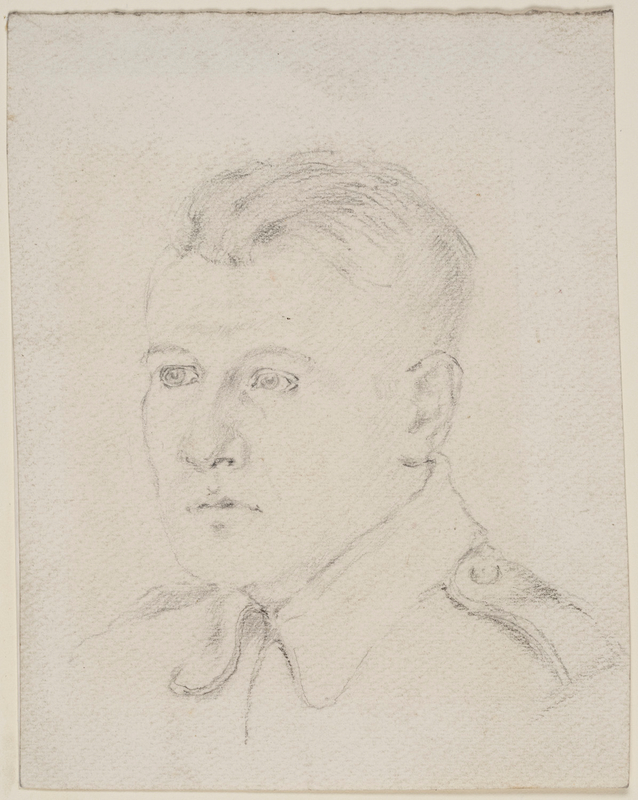
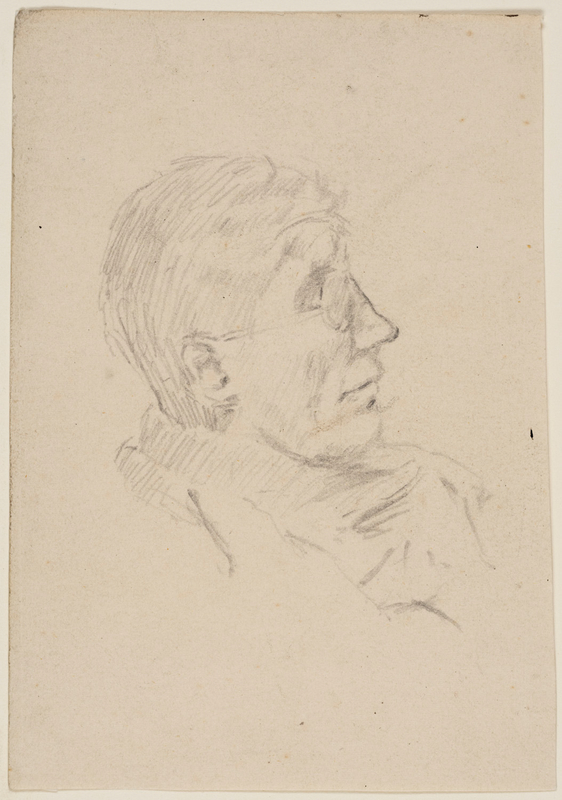
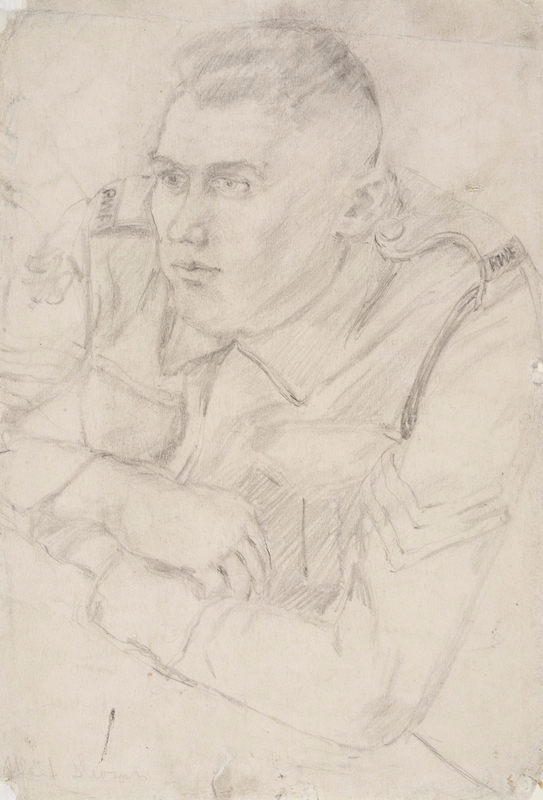

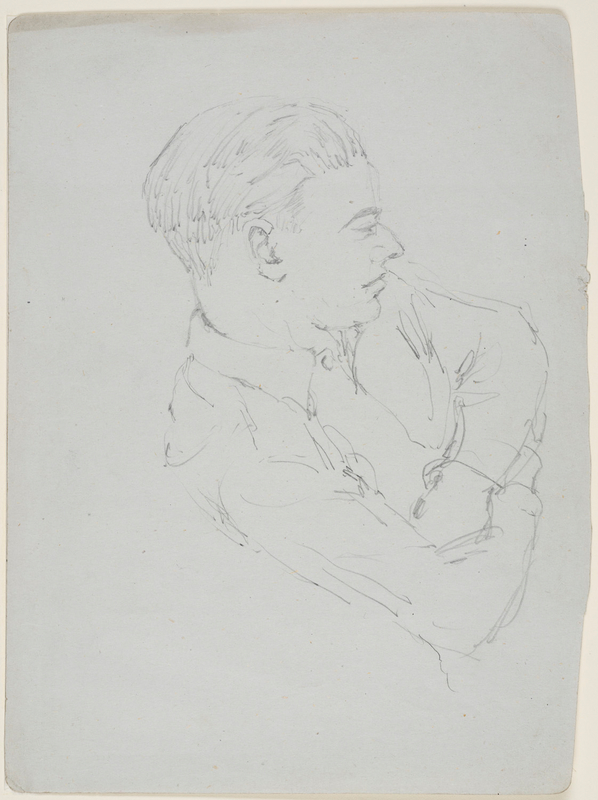
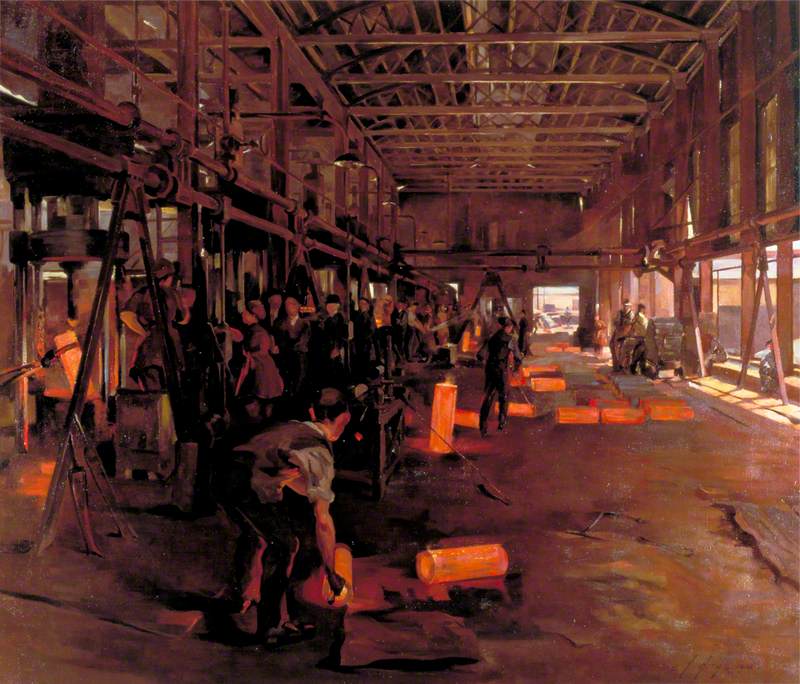

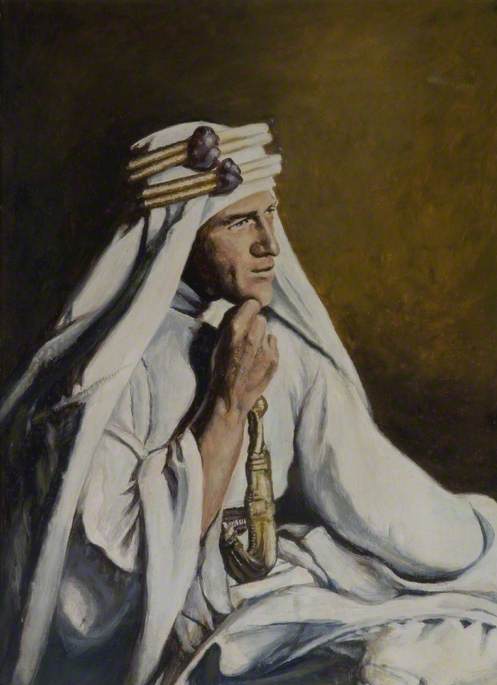
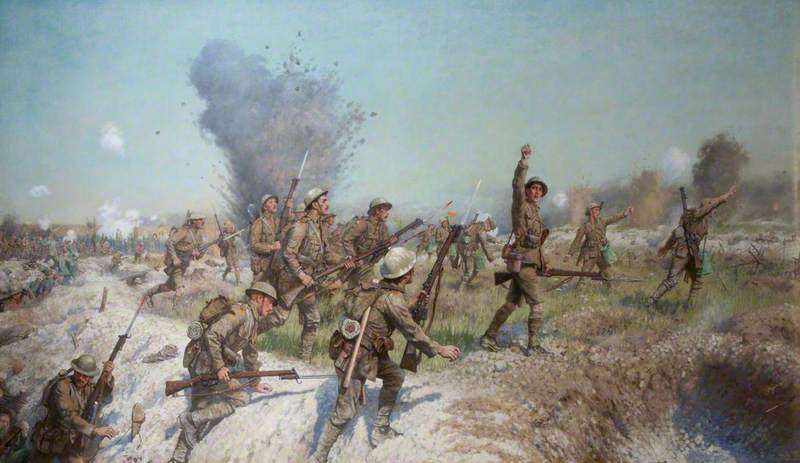
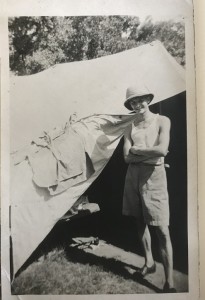
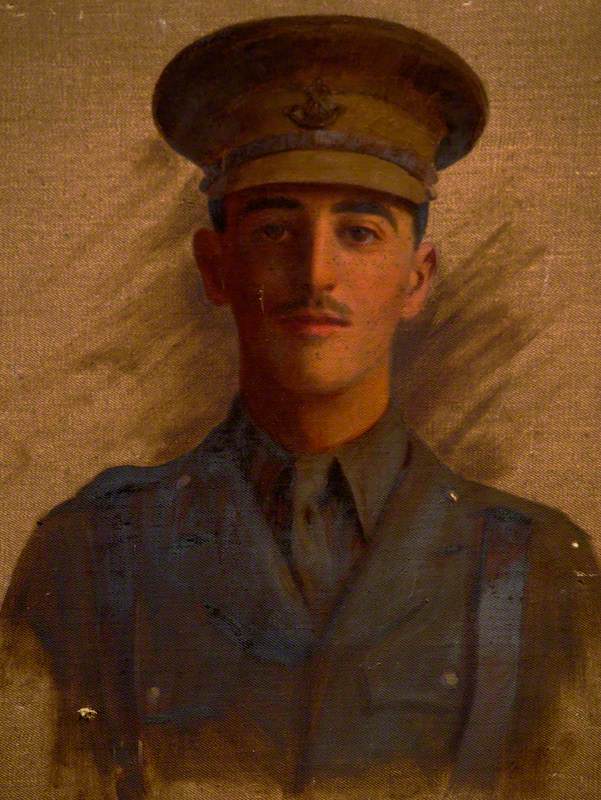
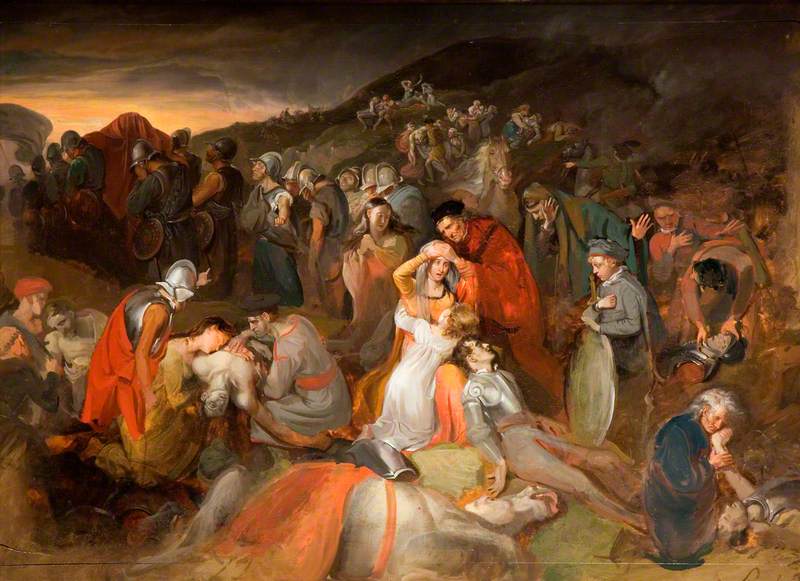

.jpg)

